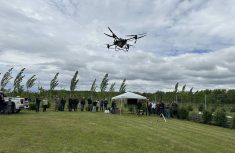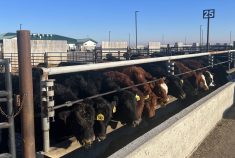There was so much in Simon Sinek’s book, Leaders Eat Last, that I wanted to do a second part in this month’s column.
There is a divide between the generations. There always has been. When people, or a group of them, are raised in a certain way and go through similar life events, they tend to have similarities. Of course, we cannot overgeneralize, as there will always be differences between individuals.
Technology and leadership company BetterUp.com notes there are potentially five generations working together:
Read Also

Alberta ranch family outlasts droughts
Over the years, the Lehr family has learned a thing or two about managing the ranch through dry years
1. Traditionalists: Also known as the silent generation, this group was born between 1928 and 1945 during the Great Depression and Second World War. Although the youngest members are in their late seventies, they are still in the work force.
2. Baby boomers: Born between 1946 and 1964, many baby boomers retired during the pandemic and continue to free up jobs for younger generations, according to the U.S. Federal Reserve. But again, many are still in the work force. On average, boomers held 12.4 jobs between the ages of 18 and 54 — only half of which were after the age of 24, states the U.S. Bureau of Labor Statistics. Their loyalty to their positions gives them a deep understanding of their job role and chosen industry.
3. Generation X was born between 1965 and 1980. They were “latchkey kids” during childhood and are known for their independence. They grew up in a time when more women swapped domestic roles for the job market, so many were home alone after school before both parents returned from work.
4. Millennials or generation Y: Born between 1981 and 1996, millennials sit on both sides of the technological shift. They were born before the popularization of the internet and personal computers. The Great Recession, a tough job market and high student loans defined many millennials’ entrances to the workforce.
5. Generation Z: The newest working generation, this group was born between 1997 and 2012. Gen Zers are digital natives, coming of age with cell phones, social media and rapidly developing modern technology.
Some of these facts may seem more relevant to the urban population than rural. But the point is that there are significant differences between generations.
Sinek, in his book, stresses that people in each group see other generations through their own unique lens. While the boomers may think the younger folks do not have the same work ethic, the millennials will say that the boomers are “chained” to their work. Millennials also want to be part of organizations that have a strong sense of purpose.
As we always want to take care of our families and provide them many opportunities, some suggest that boomer parents have gone too far, and the younger generations have a sense of entitlement. Perhaps this is an unintended consequence of trying to be better parents. The “sink-or-swim” approach to life growth is less evident these days.
It is hard to see these significant events when we are in the middle of them. But looking back to BSE and the years that followed in the beef industry, the effect of hard times can truly be significant, just like that on the generation growing up in the Depression.
The millennials and gen X and Y are now witnessing unprecedented livestock prices. At the same time, many of the input costs are also unprecedented. Artificial intelligence is going to have far-reaching effects. Some may say agriculture is more resilient, but we will still be affected. Perhaps Chat GPT or another app will replace me as a columnist in the future.
Technology is already a part of our everyday work life. We can gather and record data on our phones, guiding management decisions. We often use a game camera to check water on our operation. Doing so saves time and allows us to check the status of our most limited resource, giving us peace of mind, especially when it is over 30 C. The potential effects of virtual fencing are even greater. Cynics say that it will not work on challenging landscapes. But those that are trialing it say it is unreal how quickly the technology is getting updated. It is not perfect yet and cost is currently a limiting factor, but the ability to take grazing management to the next level is closer all the time.
We have real-time market information at our fingertips. We can watch a video and learn how to perform a technical skill, or connect with someone on another part of the globe. Each generation has different levels of comfort with these modern technologies, just as we do with other management practices.
When working with people from different generations, it’s important to try to understand where the other person is coming from. This is not easy to do when we are busy. It’s a good idea to build more opportunities for communication into our days. But that can be frustrating for the older generations who feel we just must get out there and do the physical work.
Sinek suggests a few strategies when working across the generations: create cell-phone-free time, encourage note-taking on paper instead of computers, teach leadership and teach people how to give and receive feedback. For the more senior generation, he suggests they mentor and support others, lead by example, talk about their own failures, give others the opportunity to fail, offer more opportunities to develop human skills and take a chance on the younger people. He also advises the millennials to solve their own problems, push to completion, beg for criticism and sacrifice credit.
These ideas can help all organizations and teams grow regardless of sectors. The most important part is truly recognizing that everyone views things from their own perspective. And no one is right or wrong.
















